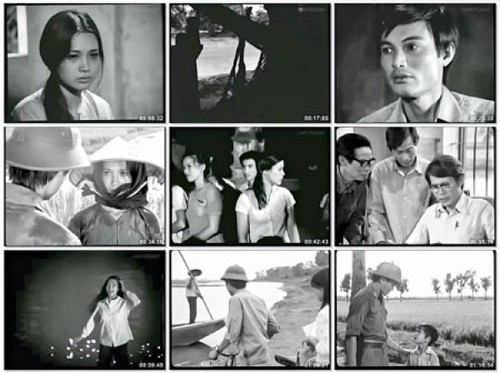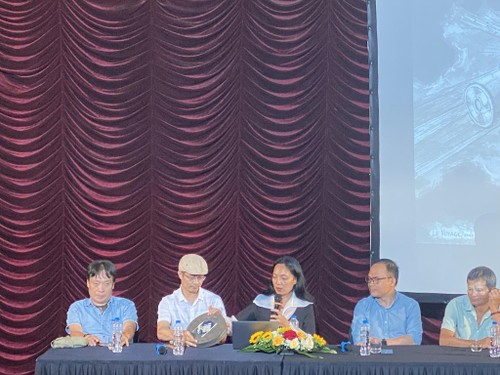 Secedes from the movie “When the Tenth Month Comes” (Photo: vov.vn) Secedes from the movie “When the Tenth Month Comes” (Photo: vov.vn) |
According to experts, documentaries and other films are closely associated with the nation’s political, cultural, economic, and scientific development. They reflect the Vietnamese land and its people. However, motion pictures have a limited life span, requiring much cost and effort for preservation.
“Films are a special archival heritage that need to be stored and preserved in a special way. Vietnam has a wealth of movies which require a lot of money and huge human resources for restoration. The first step is to restore and preserve this legacy, then promote it,” said Nguyen Hoang Diep, Director of the movie “Flapping in the Middle of Nowhere”.
Experts said digitization is urgently needed as many celluloid films are degrading rapidly. According to director Nguyen Thanh Van, only a small number of Vietnamese movies have been digitized.
“Only 40% of moving pictures have been digitized, all for streaming purposes. This means they are only archived not preserved. Preservation requires modern technology to restore, at least 90%, of the original audio and visual quality of the movies,” said Van.
 A motion picture that needs to be preserved. (Photo: vov) A motion picture that needs to be preserved. (Photo: vov) |
Dr. Tran Hoai, a researcher on Anthropology, Culture, and Heritages, said Vietnam needs to work out a list of precious moving pictures that need to be restored and preserved.
“The Recommendation for the Safeguarding and Preservation of Moving Images was adopted by the General Conference of UNESCO in 1980. In 1992, UNESCO launched the Memory of the World program to raise awareness about growing threats to the preservation of documentary heritage. Many movies have been preserved under this program. Those are valuable experiences that Vietnam can learn to preserve not only the movies but also the places where they were filmed,” he said.
Dr. Tran Trong Duong from the Institute of Chinese – transcribed Vietnamese said that the preservation of motion pictures requires great resources, consensus, and the involvement of the political system and cultural institutions.
“Film preservation should be part of the Law on Cultural Heritage. Movies reflect different historical periods of the nation, thus we need to mobilize as all available resources to preserve them.”